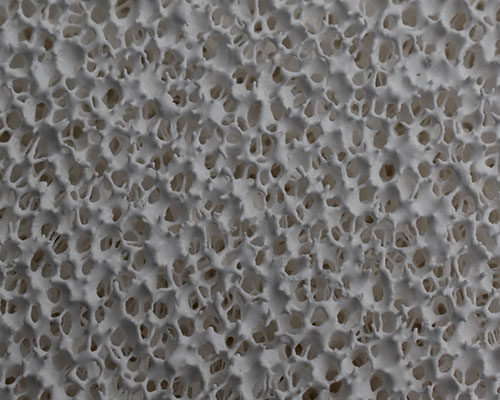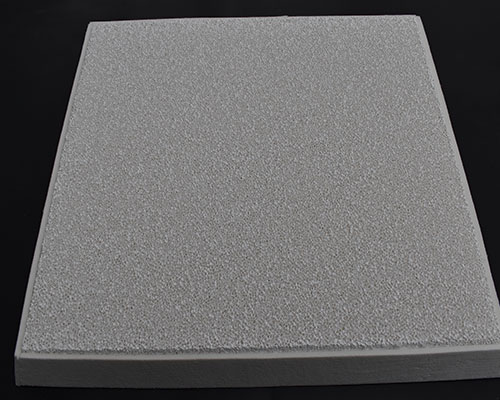In order to manufacture aluminum products with acceptable characteristics, such as beverage cans and aircraft fuselage parts, aluminum must be substantially free of inclusions and defects. When aluminum melts at the beginning of the casting process, it becomes full of oxides, borides, salts, and other impurities, which may eventually appear as harmful inclusions in the final product. It is desirable to remove these inclusions before curing the aluminum. This is usually achieved by passing molten aluminum through a ceramic foam filter.
The technique commonly used to make ceramic foam filters is called “sponge replication”. In this process, the polyurethane foam is coated with ceramic slurry, then dried to form a green filter, and then fired. During the firing process, the internal polyurethane foam evaporates and the remaining ceramic bonds form a continuous network of ceramic pillars, thereby forming an exoskeleton-like foam structure that can actively replicate the original polyurethane foam.
The ceramic foam material has an open-cell structure with a distribution of connected voids, which are surrounded by a net of ceramic material. This structure is commonly used for molten metal filtration and is called ceramic foam in the industry.

The ceramic foam filter has the ability to resist chemical corrosion of molten aluminum alloy under typical use conditions.
The molten aluminum ceramic foam filter is light in weight and preferably has a density of about 0.25-0.40 g/cc.
The main porosity of the filter is given by the macroscopic structure of the foam because the filter is formed as an exoskeleton of the polyurethane precursor, thereby forming a replicated foam by coating with slurry and then drying and firing. The primary pore size of the foam and the final filter is preferably at least 3 PPI to no more than 100 PPI, more preferably at least 20 PPI to no more than 70 PPI. In a standard commercial operation, a filter measuring 58.4 × 58.4 × 5.1 cm (23 × 23 × 2 inches) should be able to process 100 tons of metal in one casting.

